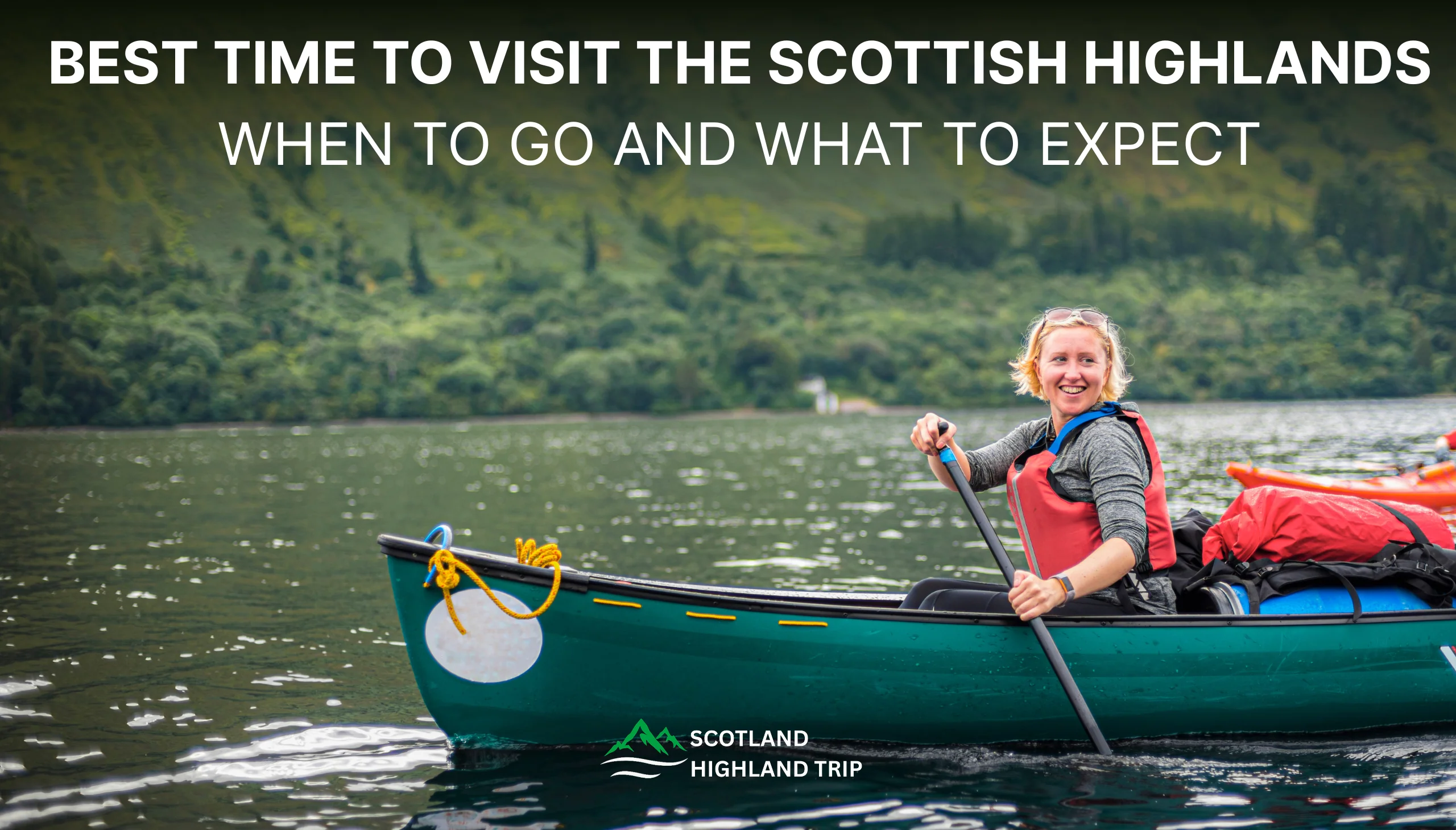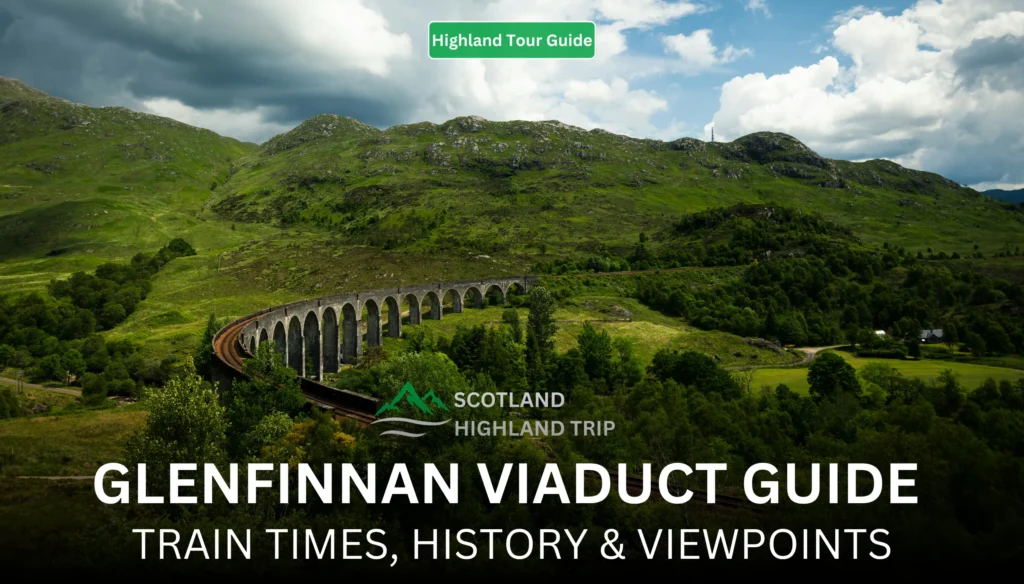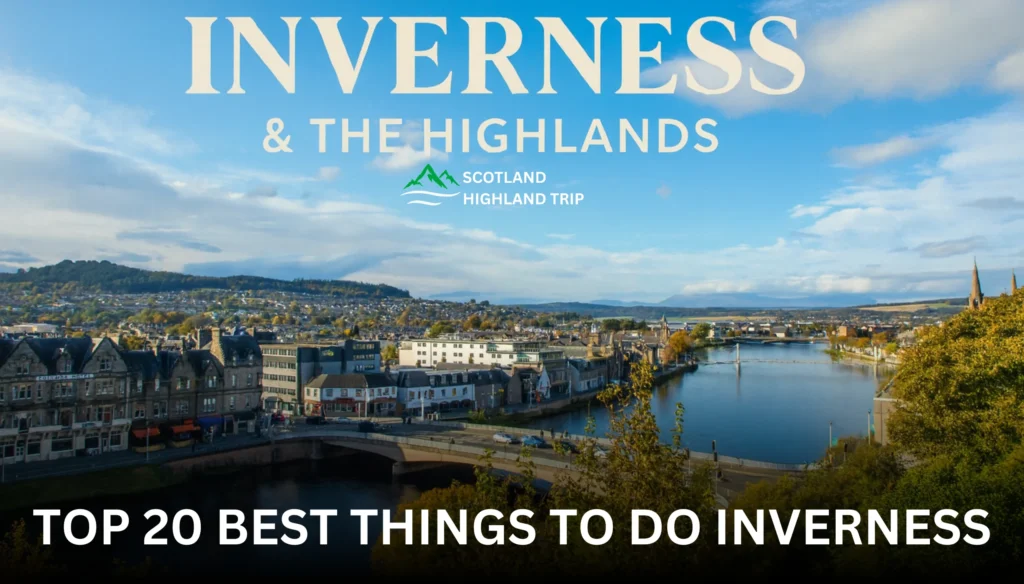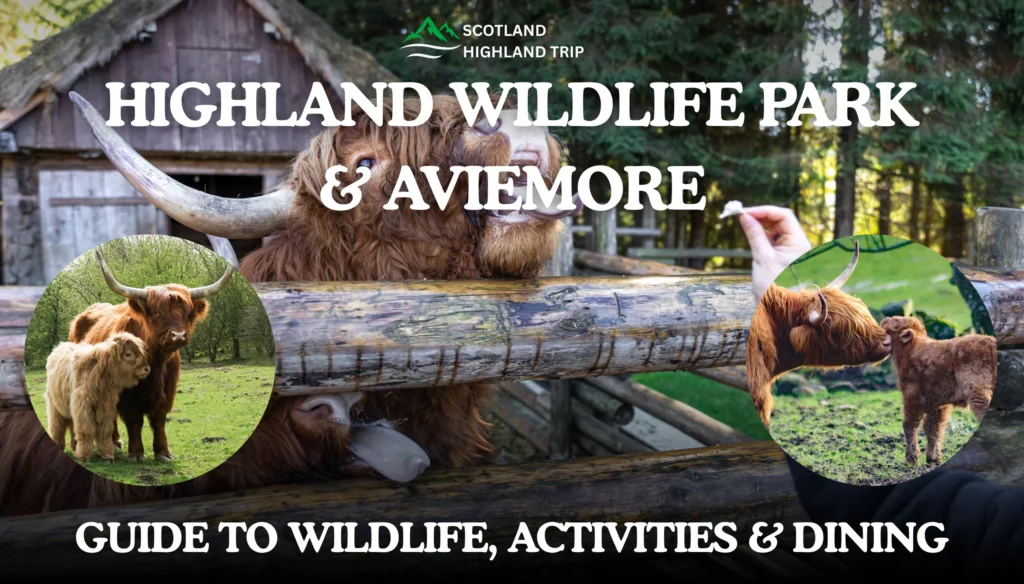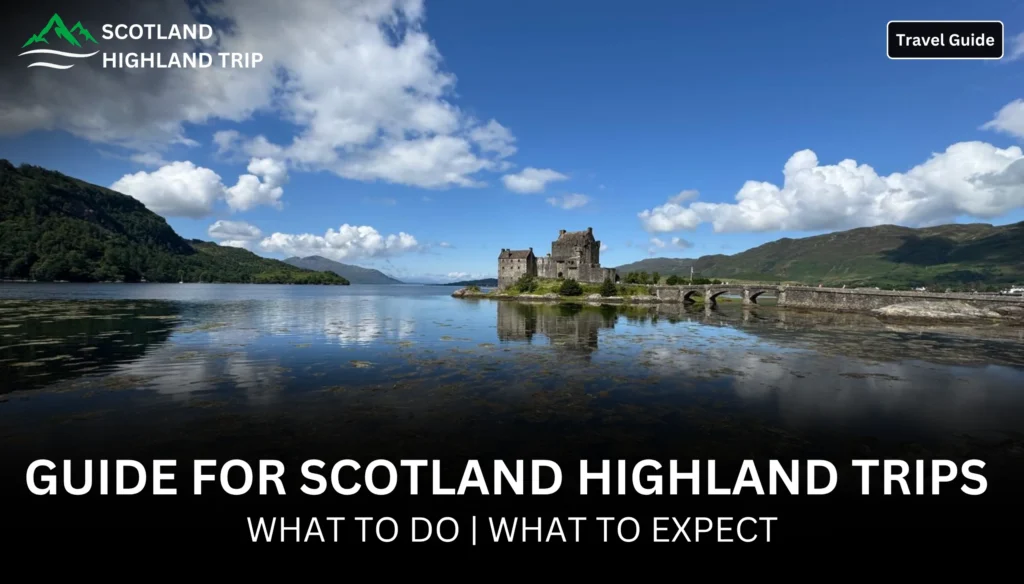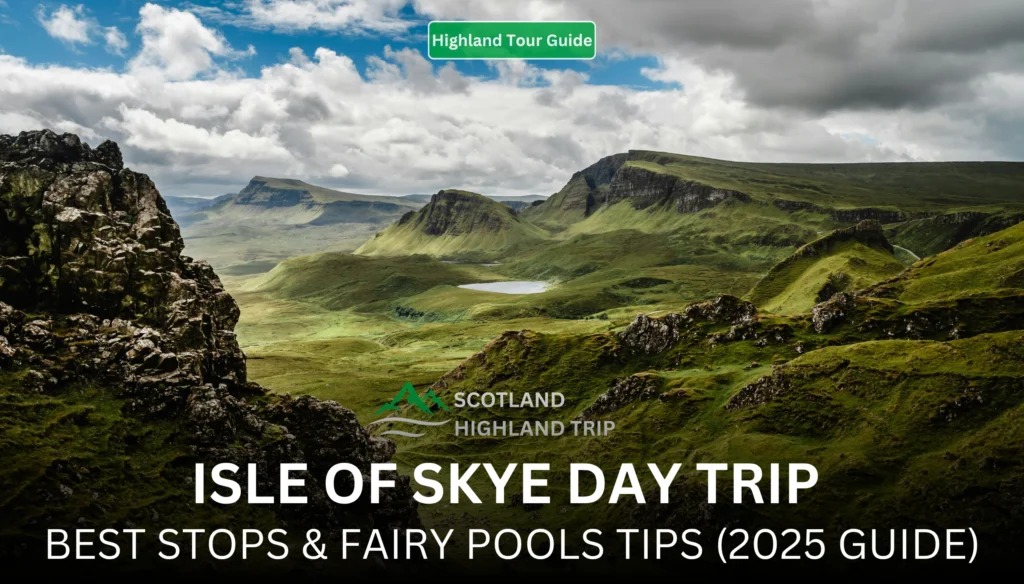The Scotland Highlands are rugged, romantic and untamed. They stretch from Fort William and Glencoe through Loch Ness, Inverness, the Cairngorms and all the way up the North Coast 500. Each season reveals a different face of this northern wilderness. Identifying the best time to visit Scotland Highlands depends on what you want from your trip, wildflowers and empty trails, long daylight and festivals, golden foliage and deer rutting, or snow‑dusted mountains and cosy fires.
Competitor travel guides often repeat the phrase “best time to visit the Scottish Highlands” and break the year into spring, summer, autumn and winter. They also note that there is no single right answer because the Highlands’ weather is famously unpredictable and you can experience four seasons in one day. The recommendations below combine official climate data, local advice and traveller experiences to help you decide when to go.
Jump to Section
How to Choose Your Perfect Time
The “best time” varies with your interests. Consider the following factors:
- Weather & daylight: Temperatures climb as spring arrives (late March to May) and are warmest between June and August. Daylight hours reach roughly 17½ h by late June in central Scotland and stay long until early August, while December brings less than seven hours of light.
- Activities: Hill‑walking and wildlife watching peak in spring and autumn; festivals, island cruises and beach days thrive in summer; snow sports and northern‑lights watching are winter highlights.
- Crowds & cost: July and August are the busiest months; prices and accommodations rise and the midges arrive. May, June and September offer good weather with fewer crowds, while November through March are quiet with winter deals.
- Midges: These tiny biting insects can affect comfort. They emerge around June and linger until September, especially near lochs and damp glens. They’re less active in wind, bright sunlight or very cold weather. Carry repellent and a head‑net if travelling during peak season.
- Festivals & events: Highland games run from May to September; Edinburgh’s Festival Fringe and Military Tattoo take place in August; October features colourful foliage; Hogmanay (New Year) and Burn’s Night (Jan 25) brighten the winter.
Use these criteria alongside the seasonal breakdown below to plan your Highland journey.
Seasonal Guide to the Scottish Highlands
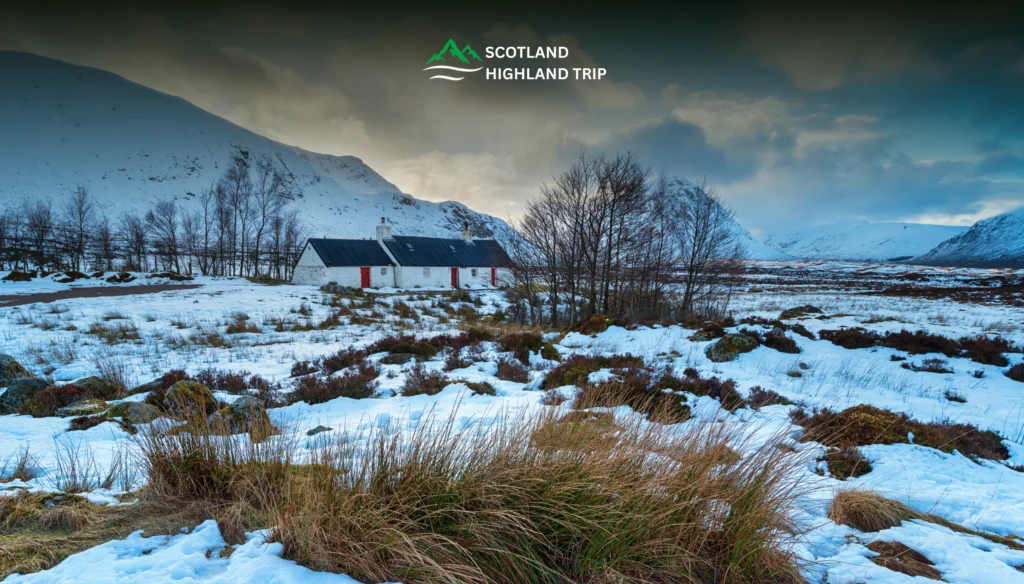
Spring (March – May)
What it’s like: Spring arrives late but transforms the glens into a palette of fresh greens and purple heather. Daffodils, wild primroses and carpets of bluebells appear, lambs gambol in fields and ospreys return from Africa. Temperatures rise to around 43–59 °F (6–15 °C), but snow may linger on high peaks and the weather remains changeable. Daylight quickly increases, reaching 13–15 h by May. Crowds are lighter because schools are still in session and midges haven’t emerged.
Highlights & events:
- Wildlife watching: Look for red deer calves, playful otters, puffins on the Treshnish Isles and osprey fishing at Loch Garten. Boat trips from Mallaig and Gairloch frequently spot porpoises and minke whales.
- World Whisky Day & World Whisky Month: The third Saturday of May celebrates Scotland’s national drink. Distilleries around the Highlands (e.g., Dalwhinnie in the Cairngorms) host tastings and tours.
- Hiking & biking: Longer daylight enables full‑day hikes like Ben Nevis or the Cairn Gorm plateau; mountain‑bike trails in Glentress and Torridon start to dry out.
- Highland games begin: Small gatherings start in late May with caber tossing, traditional dancing and piping.
Pros: Colourful landscapes, abundant wildlife, long days from April onwards, low midge levels, fewer tourists and better accommodation availability.
Cons: Weather can be cold or wet, particularly in March; snow may close higher mountain trails.
Summer (June – August)
What it’s like: This is peak season. Temperatures average around 59–66 °F (15–19 °C), though it can feel warmer in sheltered glens. Days are extraordinarily long in late June the sun barely sets and you can still walk or kayak at 11 pm. Beaches such as Sandwood Bay and Sanna Bay show off turquoise waters and white sand. However, midges arrive from June and July-August sees crowds on the roads, ferries and popular attractions..
Highlights & events:
- Beaches & islands: The Inner and Outer Hebrides enjoy the calmest seas between May and September; small‑ship cruises explore remote coves and spot dolphins and whales. The Isle of Skye’s Fairy Pools and Quiraing are lush and photogenic, though busy.
- Festivals: The Edinburgh Festival Fringe (August) is the world’s largest arts festival and coincides with the Royal Edinburgh Military Tattoo. In the Highlands, the Belladrum Tartan Heart Festival in Beauly offers family‑friendly music and the Glenfinnan Highland Gathering and the Braemar Gathering (September) celebrate traditional sports.
- Outdoor adventures: Long days are perfect for multi‑day treks such as the West Highland Way (Milngavie to Fort William). Sea kayaking around the Sound of Arisaig, hillwalking in Torridon and climbing the Cuillin Ridge on Skye are highlights.
Pros: Warmest temperatures and the chance of sunshine, endless daylight, vibrant festivals and full tourist infrastructure.
Cons: High numbers of visitors drive up prices and require early booking; roads can be crowded with camper vans; midges are at their worst between dusk and dawn.
Autumn (September – November)
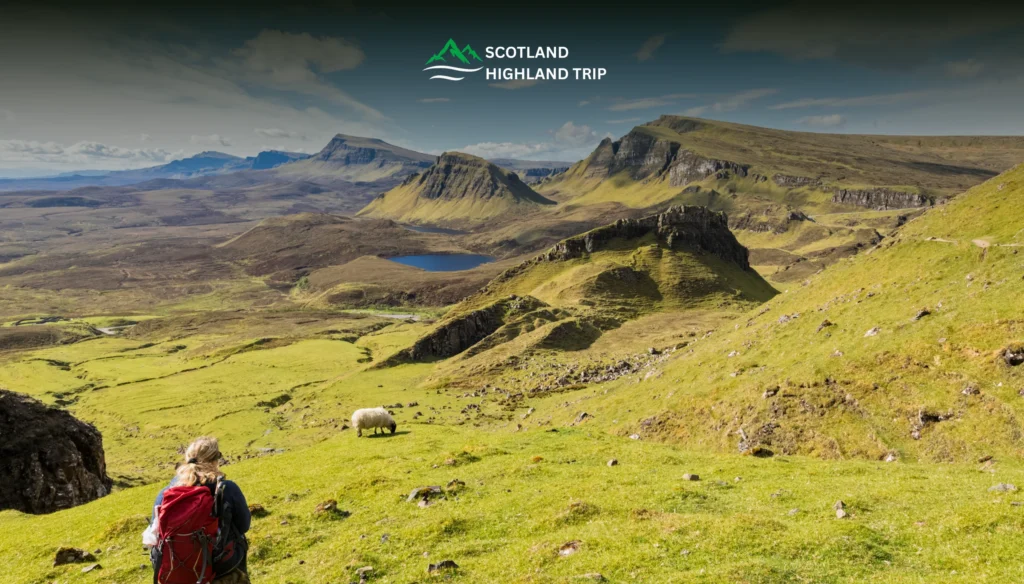
What it’s like: As crowds diminish and schools reopen, the Highlands turn golden. Trees change from green to fiery oranges and reds, and you may catch spectacular sunsets and starry skies. Temperatures cool (50–59 °F/10–15 °C in September, 41–50 °F/5–10 °C by November). Rain increases in September, which is typically the wettest month, but October is often slightly drier and clearer. Daylight shrinks but remains ample for exploration.
Highlights & events:
- Hiking & Munros: Autumn is a wonderful time to “bag a Munro” (climb a mountain over 3,000 ft). Trails are quieter and crisp air aids long ascents. The West Highland Way and North Coast 500 are calmer yet still beautiful.
- Wildlife & Northern: Red deer stags roar during the rutting season in October. Salmon leap upstream. The Northern Lights sometimes dance over the Cairngorms or Outer Hebrides.
- Festivals: The Braemar Gathering, part of the Highland games circuit, takes place in early September. In November, St Andrew’s Day (30 Nov) celebrates Scotland’s patron saint with feasts and dancing.
- Photography: Clear, low‑angled light and colourful foliage make this season a dream for photographers. The Glenfinnan Viaduct and Glencoe look spectacular in amber hues.
Pros: Reduced crowds and better availability of accommodation; spectacular colours; midges disappear in mid‑September; crisp walking weather.
Cons: Rain increases in September; daylight diminishes by October; some attractions and rural ferries reduce hours or close from late October.
Winter (December – February)
What it’s like: Winter casts the Highlands into a fairy‑tale of snow‑covered mountains, frozen lochs and glittering moors. Temperatures hover around 32–41 °F (0–5 °C) with colder snaps in the hills; daylight is short (7–8 hours). Conditions can change quickly, crisp blue‑sky days follow blizzards. Higher roads like the A9 through the Cairngorms may occasionally close due to snow and ice, so plan for flexibility.
Highlights & events:
- Snow sports: Skiing and snowboarding are available in Cairngorm Mountain, Glencoe Mountain Resort and Nevis Range. The winter sports season generally runs from November through April. Fresh powder on Meall A’Bhuiridh and eight ski lifts provide excellent runs.
- Wildlife encounters: With leaves off the trees, it’s easier to spot red deer, mountain hares turning white, ptarmigan and even golden eagles. Seals breed on the Caithness coast in November.
- Festivals: Hogmanay (New Year’s Eve) features torches, ceilidhs and fireworks; Burns Night on 25 January celebrates poet Robert Burns with haggis and whisky.
- Cosy experiences: Long nights invite evenings in front of roaring fires. Castle hotels like Inverlochy or Eilean Donan are magical under snow and frost.
Pros: Snowy scenery, fewer visitors, Northern Lights possibilities, lower accommodation prices.
Cons: Short daylight, potential travel disruptions, many attractions closed, cold and wet conditions.
Month‑by‑Month Summary
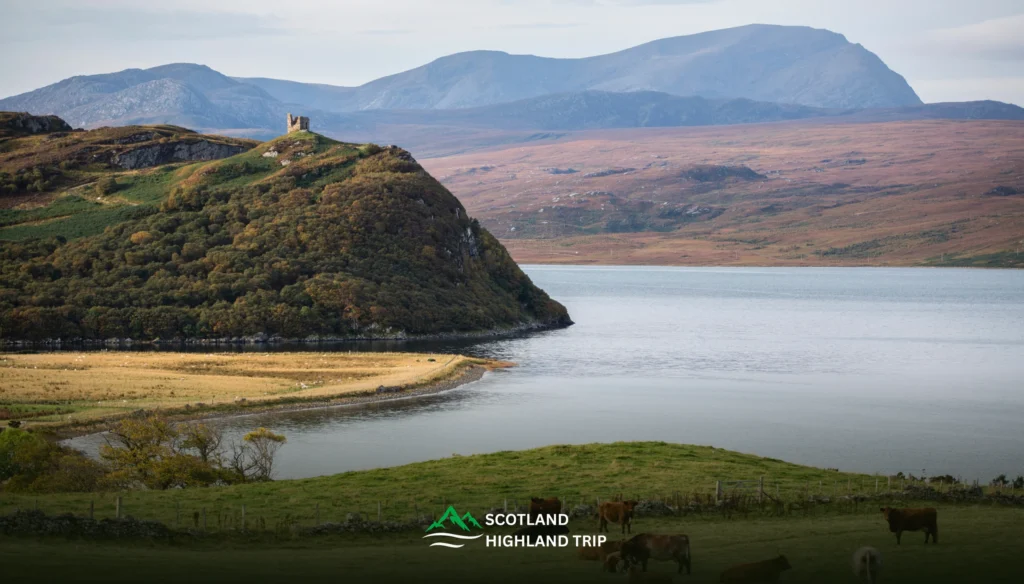
Below is a snapshot of typical weather and notable events. Temperatures vary by region (coastal areas are milder than inland glens). Rainfall is presented as approximate monthly totals from the Responsible Travel climate chart.
| Month | Avg Min & Max °C (Highlands) | Rain (mm) | Daylight Hours | Events & Notes |
|---|---|---|---|---|
| Jan | −1 – 4 °C | ~303 mm | 7-8 h | Bitterly cold with snow in mountains and icy winds. Hogmanay celebrations continue in the first few days; Burns Night (25 Jan) honours poet Robert Burns with haggis and whisky. |
| Feb | −1 – 5 °C | ~204 mm | 8-9 h | Still cold with snow. Fort William Mountain Festival celebrates mountaineering. |
| Mar | 0 – 6 °C | ~254 mm | 11-12 h | Early spring; snow remains on higher peaks but lower slopes start to thaw. |
| Apr | 1 – 10 °C | ~127 mm | 13-14 h | Driest month for Edinburgh; Beltane fire festival marks the end of winter on 30 Apr. |
| May | 4 – 13 °C | ~133 mm | 15-17 h | One of the best months: long daylight, spring blossoms and Highland games begin. World Whisky Day and many whisky festivals. |
| Jun | 7 – 15 °C | ~144 mm | 17-18 h | Peak daylight; midges appear. Cruises around the Hebrides enjoy calm seas. |
| Jul | 8 – 16 °C | ~167 mm | 16-17 h | Warmest month with school holidays and busiest tourism. Edinburgh Festival Fringe and Military Tattoo (Aug) draw crowds. |
| Aug | 8 – 16 °C | ~189 mm | 15-16 h | Continued festivals; midges strong; beaches and lochs popular. |
| Sep | 7 – 14 °C | ~272 mm | 12-13 h | Wettest month; Braemar Gathering; start of deer rutting season; Northern Lights possible. |
| Oct | 5 – 11 °C | ~304 mm | 10-11 h | Peak autumn colours; cooler and slightly drier than September; some attractions begin to close. |
| Nov | 1 – 7 °C | ~286 mm | 8-9 h | Cold with first snow; St Andrew’s Day celebrations on 30 Nov; quiet tourism period. |
| Dec | 0 – 5 °C | ~299 mm | 7 h | Shortest days; crisp, clear weather possible; Christmas markets and Hogmanay preparations. |
Regional Differences and Micro‑Climates
- West vs East: The west coast (Glencoe, Fort William, Isle of Skye) is milder but wetter due to Atlantic fronts. The east (Cairngorms, Aviemore) tends to be colder in winter and sunnier in summer. Travelers on Reddit note that the west coast can be beautiful in cloudy, wet weather.
- Lowlands vs Highlands: Lowland areas such as Inverness, Loch Ness and Speyside experience less extreme weather and can be visited year‑round. Mountainous regions like Ben Nevis, the Cuillin Ridge and the Cairngorm plateau have their own alpine climate, expect snow from November to April and high winds at any time.
- Islands: The Inner and Outer Hebrides (Skye, Mull, Lewis, Harris) benefit from mild Gulf Stream currents. Sea conditions are calmest between May and September; ferry disruptions are more likely in winter. Shetland and Orkney lie much further north, daylight reaches 19 h in midsummer but falls to 6 h in December.
Dealing with Midges
Midges are tiny biting flies that swarm in calm, damp conditions. They emerge in early June and taper off by late September. Their bites are itchy but not dangerous. Tips to avoid them:
- Plan outdoor activities for windy or sunny times; they dislike breezes and direct sunlight.
- Wear long sleeves and trousers; use midge‑proof head nets in sheltered glens.
- Apply insect repellent containing DEET, Picaridin or natural oils; some locals swear by Avon Skin So Soft.
- Stay near the coast where sea breezes reduce swarms.
FAQs (Answer Engine Optimisation)
Is May or September better for visiting the Scottish Highlands?
Both months offer long daylight, mild temperatures and relatively low tourist numbers. May brings carpets of wildflowers and is usually before the midges arrive. September has autumn colours and deer rutting season but tends to be wetter and marks the end of many Highland games.
When does the midge season start and end?
Midges typically appear in early June and last until September. They are most active at dawn and dusk in damp, sheltered areas.
Can I visit the Highlands in winter without a car?
Yes, but plan carefully. Trains run to Inverness, Fort William and Aviemore, and buses connect to some villages. Guided small‑group winter walking holidays operate from December to March, but you’ll need crampons and ice‑axes for remote hiking. Snow can disrupt services; always check weather forecasts and transport updates.
Are the Highland games worth attending?
Absolutely. From late May to September, towns across the Highlands host games featuring caber tossing, tug‑of‑war, piping and Highland dancing. The Braemar Gathering (early September) often has royal attendance.
What is Hogmanay?
Hogmanay is the Scottish New Year celebration held on 31 December. In the Highlands and across Scotland it includes torchlight processions, live music and fireworks.
Pro tips for planning your Highland getaway
- Book accommodation early for summer and festival dates. Popular spots like Skye, Fort William and Aviemore sell out months in advance during July and August. Consider basing yourself in smaller towns such as Pitlochry or Dornoch for better availability.
- Layer clothing. Scottish weather is changeable, as Billy Connolly famously said, “There is no such thing as bad weather, only the wrong clothes”. Pack waterproofs, warm layers and good footwear in every season.
- Use the right of responsible access. Scotland’s “right to roam” lets you explore most land and inland water responsibly. It also means there’s always a quiet trail even during high season.
- Consider public transport and guided tours. Driving offers flexibility, but trains such as the West Highland Line (Glasgow – Fort William – Mallaig) and Kyle Line (Inverness, Kyle of Lochalsh) reveal spectacular scenery without the stress. Guided cruises and small‑group hikes run in every season and include local knowledge.
- Plan for short daylight in winter. Schedule sightseeing between 9 am and 3 pm from November to January; carry a head torch for walks.
- Be flexible. Locals and travellers alike stress that Scottish weather is unpredictable and you should embrace all conditions from sun‑drenched beaches to misty glens or cosy pubs. As one traveller noted, “It’s not California… sit in the pub and soak in the views if it’s absolutely bucketing down”.
Plan your Highland adventure with us
Wondering when to experience the Highlands for yourself? Our local experts design personalised itineraries for every season. Whether you want to climb the Ben Nevis, cruise the Hebridean islands, hunt for the Northern Lights or sample whiskies along the Speyside Malt Whisky Trail, we’ll help you choose the perfect dates, book cosy lodges and arrange knowledgeable guides. Plan your Scottish Highlands trip with us today.
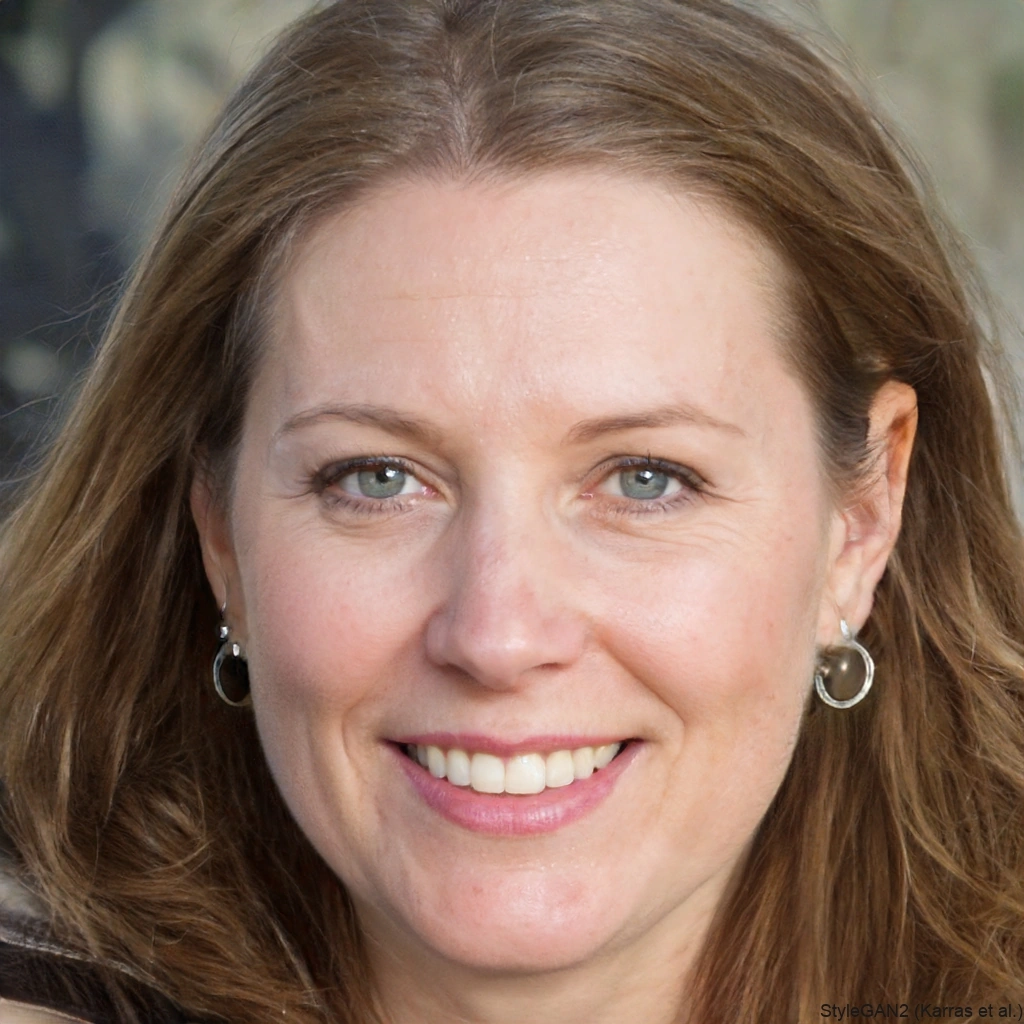
Emma is a solo traveler and freelance travel writer from New Zealand who spent three weeks exploring the Scottish Highlands. With a deep appreciation for history and landscapes, she booked a series of day tours and a private chauffeur journey with Scotland Highland Trip. From Loch Ness to the Cairngorms, she documented her experience through vivid blog posts and drone footage.

